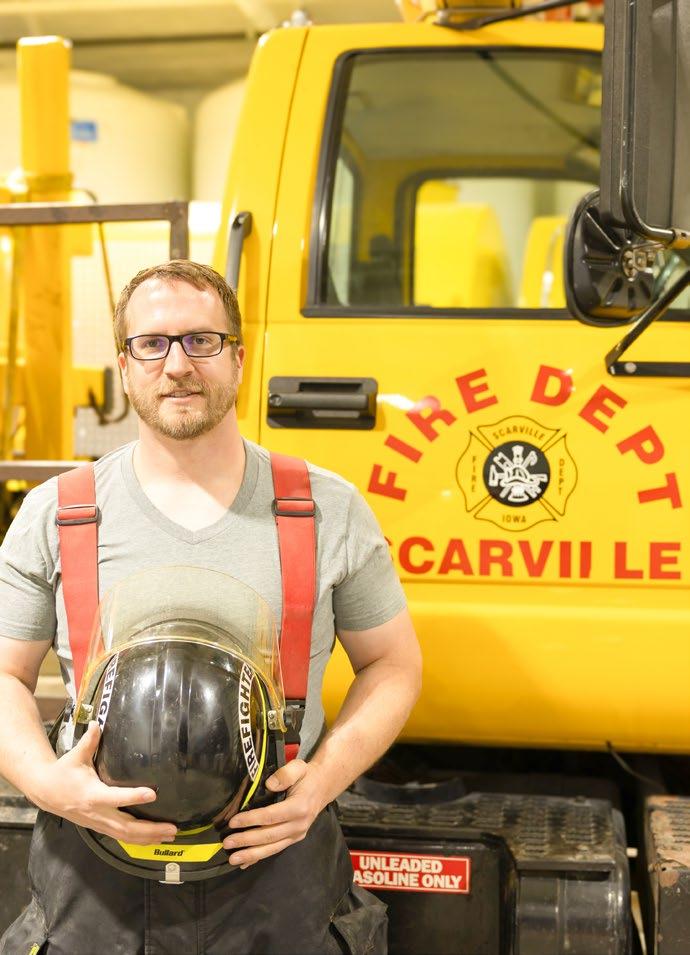
3 minute read
From Firefighting to Farming
From Firefighting to Farming
By Bethany Baratta bbaratta@iasoybeans.com
As harvest nears, farmers focus on moisture levels, machine maintenance and grain storage. But for Mike Yegge, a soybean farmer and volunteer firefighter in Scarville, fire safety is always top of mind.
Yegge, who serves as an Iowa Soybean Association (ISA) District 2 director, brings a unique perspective to the farm. He's witnessed field fires firsthand, and he's also trained to respond to them.
His path into fire service began during his first career as a mechanical engineer with a Navy nuclear shipyard in Bremerton, Wash. While living in Washington, he earned his Firefighter 1 certification.
"It started as a way to get involved in the community," says Yegge, who returned to the family farm near Lake Mills in 2019. "That experience really shaped how I look at things now on the farm, especially during harvest."
His family has seen firsthand the dangers of fire on the farm.
"My dad had two combine fires when I was younger," Yegge recalls. "One happened when my dad was at the shop getting spare parts. The neighbor called to say the combine was on fire. The other was an engine fire caused by leaking fluids and leftover bean chaff that hadn't been cleaned off."
Though no one was injured in the fires, it left an impression on Yegge.
As a firefighter and a farmer, fire safety is at the forefront year-round.
"A lot of people wait too long to call for help," he says. "Conditions are never perfect to put out a fire. It's best to be proactive."
Did you know?
A new soy-based fire suppressant, SoyFoam™ TF 1122 by Cross Plains Solutions, uses soybean meal instead of traditional foams that may contain PFAS — harmful 'forever chemicals' linked to health risks. The product was developed with support from U.S. soybean farmer-funded research.
Fire Safety Tips
Yegge emphasizes the importance of preparation and awareness, especially when conditions are dry and windy. Here's his harvest season fire safety checklist:
Before Harvest
Perform thorough maintenance:
Grease and oil all moving parts.
Inspect for worn bearings and potential binding.
Clean engines and remove crop residue like bean chaff or corn dust.
Check and equip fire extinguishers:
Place the correct type of extinguishers in combines and other harvest equipment.
Include water tanks if possible for added fire suppression.
Train your team:
Review fire response plans with employees or family members.
Show them extinguisher locations and remind them of emergency contact protocols.
During Harvest
Watch the weather:
Don't hesitate to shut down operations on dry, windy days, where fire presents a greater risk for spreading fires.
Let equipment cool down:
Avoid stopping on corn stalks; opt for bean stubble or bare ground to minimize fire spread risk.
Allow combines and other machinery to cool down before leaving them parked.
Perform a walk-around inspection, checking for smells or signs of heat.
Have emergency access tools nearby:
Keep a spare vehicle and cell phone close for a fast response.
Tillage equipment can help dig firebreaks in an emergency.
Communicate clearly:
Ensure everyone knows who to call and how to describe the location.
Early response is critical, don't delay calling 911.





